by Dan Durda
- Published: Thursday, October 16 2014 01:22
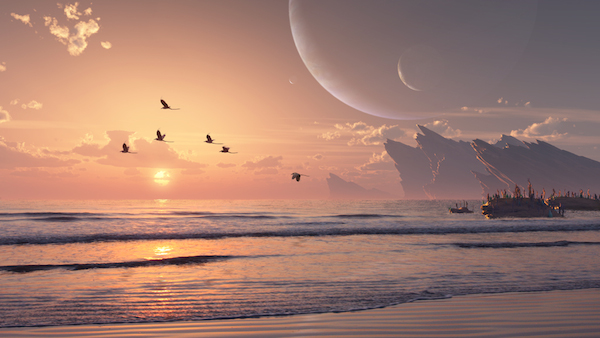
Title: “Beach by Dan Durda” Caption: “Sunrise on a very distant beach.”
Otherworldly planetary landscapes and their alien biotas fill my space artwork thanks to a nearly life-long fascination with the idea that we might live in a galaxy packed to the rafters with habitable worlds. As I described in my first blog entry, there was no doubt I was going to end up in a career in science. As a youngster I lapped it all up - astronomy, geology, biology, you name it. I think it was because of the influence of all the nature documentaries I watched growing up that I've always had a special fondness for biology and natural history. As I've described, though, I work today as a professional astronomer thanks to Cosmos. The interwoven themes through a couple episodes of Cosmos of the potential diversity of architectures of other planetary systems and the vast stage for the play of life that they represent really struck a chord with me during my early teenage years. Wonderfully, beautifully merging my deep connection to things biological with my long interest in astronomy, a pathway to that inevitable science career was being paved.
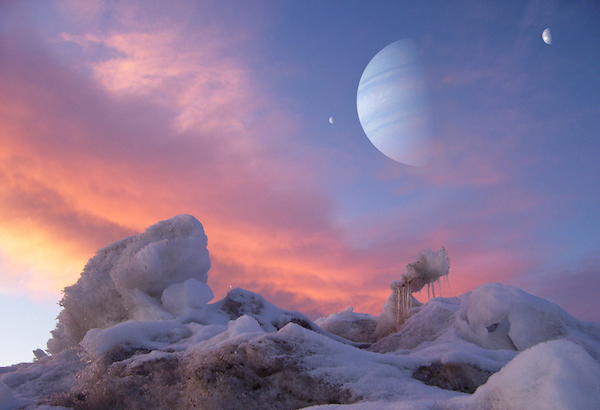
Title: “Extrasolar Planet by Dan Durda” Caption: “An icy moon of a Neptune-like exoplanet.”
I have clear, fond, and early memories of scanning the night sky with my Dad's binoculars. I grew to love every detail of Moon's cratered surface and even picking out some of the Galilean moons of Jupiter every now and then. Very early on I had even naively wondered, I suppose by analogy with the appearance of Jupiter's moons, if some of those faint starlets accompanying other star might just maybe be planets orbiting them. It didn't take long to learn that clearly that wasn't something I'd be seeing with mere binoculars and what I was seeing instead were visual binary stars. One of my favorite things to do on a late summer evening (and it still is to this day) was to lay on the ground and just scan the Milky Way around the area of the summer triangle (which, from my nothern Michigan vantage point, was a comfortable zenith target while laying on my back). Even though I now knew I couldn't see them, I'd still wonder about all those planetary systems that might be up there.
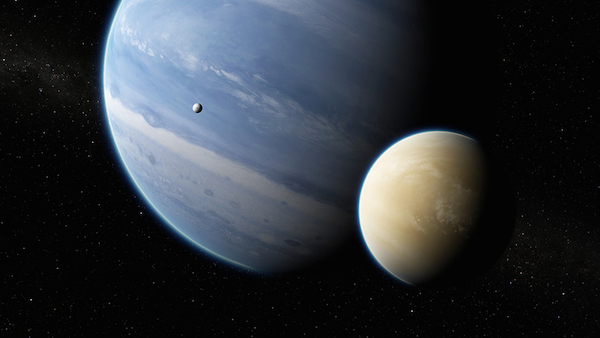
Title: “Desolate by Dan Durda” Caption: “A barren exomoon cloaked in a noxious atmosphere.”
So, from those childhood roots, and freshly fascinated thanks to Cosmos, I was primed to enter college and start my advanced astronomy education with the notion that I might focus my attention on better understanding the telescopic techniques that could be brought to bear to actually detect and observe planets around other stars. I gobbled up every book chapter and journal article I could find on the subject. I was even invited to give one of the astronomy department's public lectures on the topic of detection of extrasolar planets - I enjoyed the heck out of that experience!

Title: “The HD99109b System by Dan Durda” Caption: “HD99109 is a K0V star about 160 light years away in the direction of the constellation Leo. It is known to have at least one gas giant planet orbiting at about 1 AU.”
But wait a minute. There's not one single exoplanet publication in my 20+ years of professional research. What happened? Well, asteroids happened! My doctoral thesis advisor set me to working on the problem of figuring out how much dust is contributed to the zodiacal clouds from collisions between asteroids. I got deep into rock-on-rock impacts and collisional evolution early in my graduate career and am still at it - making mole hills out of mountains one way or another ever since.
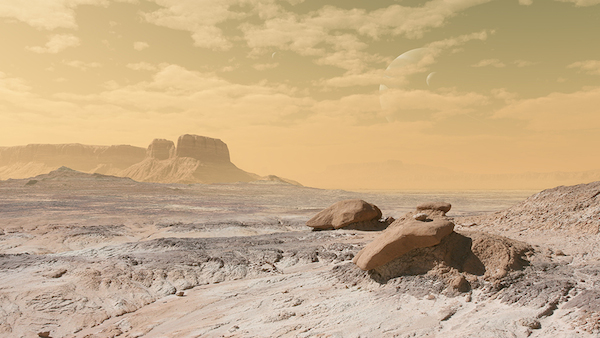
Title: “Kepler Transitting Exomoon by Dan Durda” Caption: “NASA's Kepler mission has revolutionized our perspective on the number of potentially habitable planets in the Milky Way. Although many of the worlds Kepler has discovered are large, jovian gas giants orbiting close to their parent stars, it may well be that most of those planets have moons. Perhaps some of them may be habitable.... ”
But my love of exoplanets and alien life lives on through my artwork. I may not be working right now on the research end of the endeavor, but it's hard to leave your early passions behind. I imagine and explore all those worlds and the life some may harbor through my artwork. I have followed the discoveries of NASA's Kepler mission with great interest and joy, and I'm even fortunate enough to get to illustrate a web news story for the project every now and then. I find it to be a poetic turn indeed that all these years later the starfield that Kepler focused on for its prime mission and where we now know that thousands upon thousands of planetary ssytems now reside is that same starfield in the Milky Way of the summer triangle that I so enjoyed starhopping those many summer evenings ago.
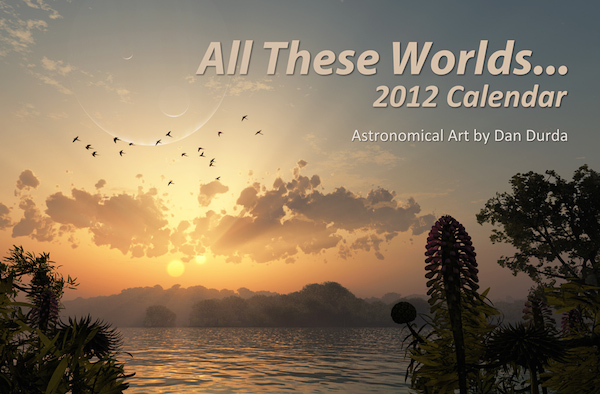
Title: “All These Worlds by Dan Durda” Caption: “A lushly-populated exomoon. Cover image for a calendar I produced for 2012. ”








Comments